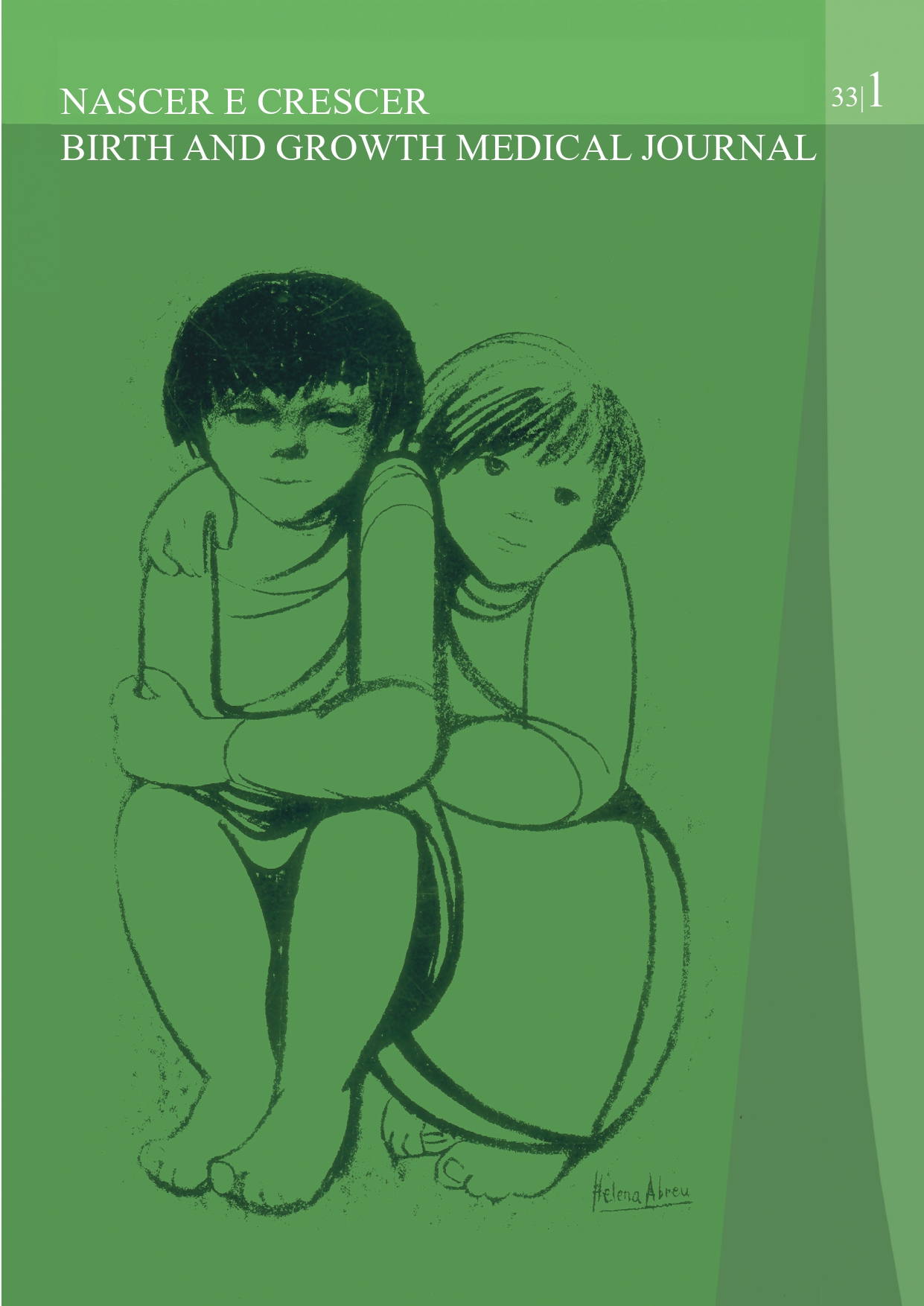TRAP sequence – A case of successful conservative management
DOI:
https://doi.org/10.25753/BirthGrowthMJ.v33.i1.26665Keywords:
acardiac twin, monochorionic, multiple pregnancy, pump twin, TRAP sequenceAbstract
Twin reversed arterial perfusion (TRAP) is a rare sequence that complicates monochorionic multiple pregnancies. This condition affects both fetuses - the acardiac twin and the pump twin. This report presents the case of a monochorionic multiple pregnancy complicated by TRAP diagnosed in the first trimester. After clarifying the couple and multidisciplinary discussion, conservative management was chosen because no genetic abnormalities or complications were identified in the normal twin development throughout pregnancy, and the acardiac twin stopped growing at 16 weeks, resulting in a vaginal term delivery of a healthy baby. In utero intervention is currently the first-line treatment option in these cases, but several studies have reported the benefits of an expectant approach. The optimal approach has not yet been established.
Downloads
References
van Gemert MJC, van den Wijngaard JPHM, Vandenbussche FPHA. Twin reversed arterial perfusion sequence is more common than generally accepted. Birth Defects Res Part A - Clin Mol Teratol. 2015;103(7):641–3.
Gillim DL, Hendricks CH. Holoacardius - Review of the literature and a case report. 1953. p. 647–53.
Steffensen TS, Gilbert-Barness E, Spellacy W, Quintero RA. Placental pathology in trap sequence: Clinical and pathogenetic implications. Fetal Pediatr Pathol. 2008;27(1):13–29.
Pasquini L, Wimalasundera RC, Fisk NM. Management of other complications specific to monochorionic twin pregnancies. Best Pract Res Clin Obstet Gynaecol. 2004;18(4):577–99.
Shettikeri A, Acharya V, Shailaja S, Sahana R, Radhakrishnan P. Outcome of Pregnancies Diagnosed with TRAP Sequence Prenatally: A Single-Centre Experience. Fetal Diagn Ther. 2019;560038.
Pagani G, D’Antonio F, Khalil A, Papageorghiou A, Bhide A, Thilaganathan B. Intrafetal laser treatment for twin reversed arterial perfusion sequence: Cohort study and meta-analysis. Ultrasound Obstet Gynecol. 2013;42(1):6–14.
van Gemert MJC, Ross MG, Nikkels PGJ, Wijngaard JPHM va. den. Acardiac twin pregnancies part III: Model simulations. Birth Defects Res Part A - Clin Mol Teratol. 2016;106(12):1008–15.
Gemert MJC Van, Pistorius LR, Benirschke K, Bonsel GJ, Vandenbussche FPHA, Paarlberg KM, et al. Hypothesis Acardiac Twin Pregnancies : Pathophysiology-Based Hypotheses Suggest Risk Prediction by Pump / Acardiac Umbilical Venous Diameter Ratios. 2015.
Buyukkaya A, Tekbas G, Buyukkaya R. Twin reversed arterial perfusion (TRAP) sequence; Characteristic gray-scale and doppler ultrasonography findings. Iran J Radiol. 2015;12(3):1–3.
Moore TR, Gale S, Benirschke K. Perinatal outcome of forty-nine pregnancies complicated by acardiac twinning. Am J Obstet Gynecol [Internet]. 1990;163(3):907–12. Available from: http://dx.doi.org/10.1016/0002-9378(90)91094-S.
Yıldırım E. Spontaneous triplet pregnancy and trap sequence, case report. BMC Pregnancy Childbirth. 2019;19(1):328.
Mone F, Devaseelan P, Ong S. Intervention versus a conservative approach in the management of TRAP sequence: a systematic review. J Perinat Med. 2016;44(6):619-29. doi: 10.1515/jpm-2015-0165. PMID: 26356357.
Sullivan AE, Varner MW, Ball RH, Jackson M, Silver RM. The management of acardiac twins: A conservative approach. Am J Obstet Gynecol. 2003;189(5):1310–3.
Ziki EM, Chirenje ZM, Madziyire MG. A case of twin reversed arterial perfusion (TRAP) sequence managed conservatively. Pan Afr Med J. 2019;32:1–4.
Barbier M, Petrovic M, Simon P, Khiat S, D’Ercole C, Blanc J. TRAP sequence in a monochorionic diamniotic pregnancy: A rare and unpredictable syndrome. Eur J Obstet Gynecol Reprod Biol. 2020;247(2019):259–61.
Downloads
Published
How to Cite
Issue
Section
License
Copyright (c) 2024 Ana Varejão, Mariana Dória, Mafalda Laranjo, Fátima Soares, Inês Sarmento Gonçalves

This work is licensed under a Creative Commons Attribution-NonCommercial 4.0 International License.
Copyright and Authors' Rights
All articles published in Nascer e Crescer - Birth and Growth Medical Journal are Open Access and comply with the requirements of funding agencies or academic institutions. For use by third parties, Nascer e Crescer - Birth and Growth Medical Journal adheres to the terms of the Creative Commons License "Attribution - Non-Commercial Use (CC-BY-NC)".
It is the author's responsibility to obtain permission to reproduce figures, tables, etc. from other publications.
Authors must submit a Conflict of Interest statement and an Authorship Form with the submission of the article. An e-mail will be sent to the corresponding author confirming receipt of the manuscript.
Authors are permitted to make their articles available in repositories at their home institutions, provided that they always indicate where the articles were published and adhere to the terms of the Creative Commons license.


